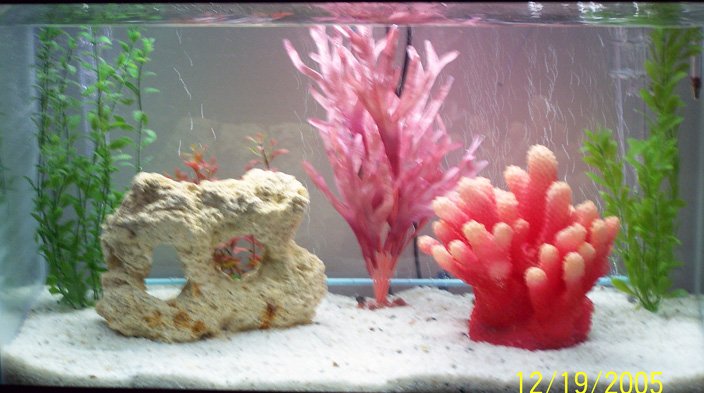TheChad
Aquarium Advice FINatic
Hey All,
My wife and I just started our first saltwater aquarium. We have a 29-gal tank, and we mixed our instant ocean mix at 28-gal. We took our sample into the LFS and was told our salinity was too high 1.028. So I bought the Instant Ocean Hydrometer so i could test this my self. After exchanging about 4-6 gallons of water, I get a reading of 1.023.
When I took my water sample in to another LFS to get our damsel's, they told me my salinity was 1.20 which they was was perfect.
I know its only a 0.03 difference, but if thease fish are as sensative as I understand that they are, that might make a difference.
My Instant Ocean Hydrometer is the floating needle type, the one they used at the 2nd LFS was the floating thermometer type..
Is one more accurate than another?
Right now we just have 2 damsels, one blue and one yellow tail. Once our tank cycles (Which I'm told is usually once the algie grows, and turns from brown to green (1-2 Months), We will be looking at getting a couple of clown's, a fire shrimp, probably a choclate chip star fish, a Heniochus Butterfly, and a spotted mandarin. We also wanted an anemone for our clowns, but I am getting mixed input of weather or not it would be successfull in our tank!?
Thanks for the help!
-TheChad
My wife and I just started our first saltwater aquarium. We have a 29-gal tank, and we mixed our instant ocean mix at 28-gal. We took our sample into the LFS and was told our salinity was too high 1.028. So I bought the Instant Ocean Hydrometer so i could test this my self. After exchanging about 4-6 gallons of water, I get a reading of 1.023.
When I took my water sample in to another LFS to get our damsel's, they told me my salinity was 1.20 which they was was perfect.
I know its only a 0.03 difference, but if thease fish are as sensative as I understand that they are, that might make a difference.
My Instant Ocean Hydrometer is the floating needle type, the one they used at the 2nd LFS was the floating thermometer type..
Is one more accurate than another?
Right now we just have 2 damsels, one blue and one yellow tail. Once our tank cycles (Which I'm told is usually once the algie grows, and turns from brown to green (1-2 Months), We will be looking at getting a couple of clown's, a fire shrimp, probably a choclate chip star fish, a Heniochus Butterfly, and a spotted mandarin. We also wanted an anemone for our clowns, but I am getting mixed input of weather or not it would be successfull in our tank!?
Thanks for the help!
-TheChad

